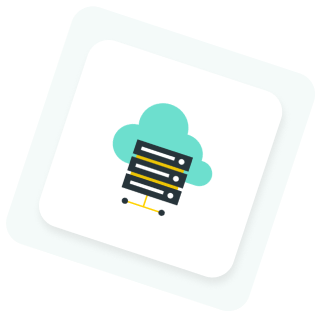In 2023, most businesses are looking for ways to cut costs to meet the current economic climate. This trend coincides with increasing subscription prices from many SaaS (Software-as-a-Service) providers in recent months.
According to Sastrify data, the average SaaS stack exceeds 96 tools – so it makes sense to take a closer look and optimize spending.
Companies are considering the following topics as they look to increase efficiency across their SaaS tools:

These questions are why Sastrify has created a guide to prepare your SaaS stack for an economic downturn in 2023. This guide includes ideas for quick wins that can save tens of thousands of dollars with just a few minutes of work.
The State of SaaS usage - at a glance

Step 1. Create transparency in your SaaS stack
The first step in preparing your SaaS stack for efficient management is to create transparency and uncover all the relevant information about your SaaS usage and spending. Most companies have attempted to gain transparency into their SaaS stacks in recent quarters in order to identify overspending. This process can be easier said than done without a dedicated SaaS procurement platform like Sastrify.
WHERE TO START: The best source of truth for an organization’s SaaS stack is typically the ERP, or Enterprise Resource Planning software. An ERP provides visibility into credit card spending as well as costs expensed. An ERP can often generate a high level listing of most of the SaaS tools being paid for.
From there, look at your entire SaaS stack, sort it by cost, and uncover where most of your spending is going.

Step 2. Use the 80/20 rule to prioritize
Once you have your full list of SaaS tools, we recommend focusing on the biggest budget items. Sastrify data shows that cost optimization in SaaS typically fits the 80/20 rule (also called the Pareto Principle). In this case, that means that 80% of your potential cost savings can come from 20% of your software stack.
On average, you’ll want to look at your top 10 to 15 tools in terms of cost. These will be your biggest levers to impact the bottom line.

Step 3. Be proactive with negotiations
Once you’ve created transparency and selected the 10 to 15 tools you want to focus on, we recommend being proactive with your renewal negotiations.
Since SaaS vendors are also dealing with a downturn, they are focused on reducing churn and maintaining a loyal, successful customer base. This focus on customer success and retention means they’re likely to be open to early renewal discussions.
Do you have any SaaS tools in the stack that you know you won’t be dropping? Even if the renewal dates are months from now, you can proactively ask for an early renewal. Go to the supplier and see if you can receive additional discounts if you’re willing to sign a longer commitment now. Since most vendors are trying to protect their recurring revenue, they are more willing to give extra discounts if you prolong the contract.
These early renewals can typically give you an immediate positive impact on cash flow, or at least a longer-term impact on the P&L.
{{form-component}}
Quick wins: Where to look for SaaS savings
As you optimize your SaaS stack to cut wasteful spending, there are a few specific areas where our Sastrify team often spots quick wins:
Everyday tools – Usage
Think of your everyday tools that everyone uses: Google Workspace, Microsoft, Salesforce, Slack, etc. The scale of these tools tends to grow quite quickly in organizations and they are often overlooked when it comes to optimization, since they are “need to have”.
However, it would be a mistake not to closely examine these tools. For example, did you know that many customers pay list price for Google Workspace but could receive up to a 50% discount if they negotiated properly? Or have you checked whether the number of licenses still fits with your employee headcount plan? Always look closely at your everyday tools to ensure optimized spending.

Tech tools – Overage
When it’s time to uncover savings opportunities, many tech tools are overlooked due to their complexity. However, because many of these have elements of usage-based pricing, they can create overage costs when there is a lack of proper forecasting.
Here’s a real-world example of a quick win with a tech tool: If someone on the team takes a look at Datadog usage and spending every two to three months and adjusts the commitment as needed, that could cut the total cost of ownership by 30-40% by the end of the year.

Payment tools – Terms
Finally, take a closer look at the SaaS tools involved with payments: e.g., Stripe, Chargebee, etc. Any software that touches your revenue offers a significant potential impact if you can negotiate for better terms.

Quick wins: Specific SaaS tools with big savings potential
If you’re looking for specific SaaS applications with high potential for cost savings, these are the 11 tools Sastrify customers saved the most on in 2022:

Sastrify also created a blog series to offer the inside scoop on negotiating renewals or new contracts with some of the top SaaS tools on the market:
Shine a light on hidden subscriptions and learn how to save on SaaS with Sastrify's spend management guide.


















